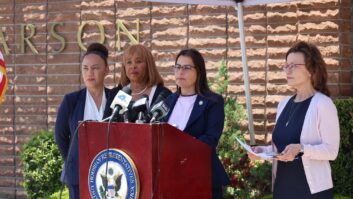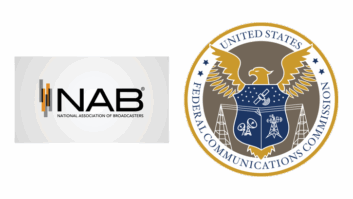A low-power advocacy network has expressed its concern to the Federal Communications Commission regarding LPFM participation in the September 2017 nationwide EAS test — pointing to lack of communication from the Media Bureau, difficulty using the ETRS database and the cost of complying with current EAS equipment rules.
In a letter sent by REC Networks Founder Michelle Bradley to Lisa Fowlkes, head of the FCC Public Safety & Homeland Security Bureau, Bradley expressed disappointment in two specific areas: the outcome of LPFM’s participation in the test and that fact the FCC did not reach out to REC in an effort to uncover why participation remained low from the 2016 test.
In mid-April, FEMA and the FCC released results of the third nationwide test of the Emergency Alert System, which was conducted on Sept. 27, 2017. The test was designed to assess the reliability and effectiveness of EAS with an emphasis on testing the Integrated Public Alert and Warning System (IPAWS), the process through which common alerting protocol-formatted (CAP-formatted) EAS alerts are disseminated to EAS participants.
[Read: REC Asks for LPFM Waiver on New EAS Reporting Duty]
The 2017 EAS report revealed that while LPFM stations did report an increase in receiving and retransmitting the test message from 2016, the actual percentage of LPFM stations participating in 2017 remained low.
There are several reasons for this, Bradley said. One biggest hurdles that LPFM stations face is difficulty in using the FCC’s ETRS database. Some LPFM stations experienced difficulty in getting FRN numbers linked to their stations, others reported browser compatibility issues, some reported frustration over the requirement that participating EAS stations must file three separate times. “As many of these stations have limited staff and volunteers, they cannot spend multiple days trying to figure out the FCC system, especially when it changes year after year,” Bradley said.
Bradley also pointed to a lack of consistent communication from the FCC.
“Another big complaint is that no one ever hears about anything related to EAS directly from the FCC,” Bradley said. One respondent suggested that the FCC mail a postcard to all broadcasters prior to the test to remind them about the upcoming test; perhaps something like this should be piloted in the LPFM service for the next nationwide test to see if it increases awareness, she said.
Bradley said that one of the primary causes of this communication confusion is that EAS is handled by the Public Safety & Homeland Security Bureau as opposed to the Media Bureau. LPFM stations normally look for news and other material coming from the Media Bureau, while the Public Safety bureau addresses issues such as E911, disaster reporting and other non-broadcast topics, she said.
“This information is way too much for the small LPFM station, [which] may be ran by only one or two people … and therefore, the appropriate parties are not reached,” she said.
Another culprit for low LPFM participation: many can’t afford the equipment, Bradley said. “LPFM stations run on shoe-string budgets,” she said.
Because of the lab testing certification requirements for EAS decoders and the limited options of decoder models, the pricing of these units are a substantial investment for LPFM stations with small budgets, Bradley said. “In some cases, the EAS is almost as expensive as the transmitter.”
That may explain why some LPFM stations may not have EAS capability. “They can’t shell out $2,000 to $3,000 for a decoder as well as additional charges for software or hardware upgrades when the government makes changes to the CAP protocol and rejects requests for workarounds that would keep more stations running older equipment in compliance,” Bradley said.
Lab testing requirements for decode-only units may be driving some non-compliance, she said. The FCC should consider market development of an open source solution that could permit LPFM stations with a spare computer and multiple soundcards or software-defined radio receivers to construct their own EAS decode-only unit, she said. This would be CAP-compliant and use off-the-shelf computer peripherals that could be made into a full CAP/EAS decoder for receiving over-the-air monitoring assignments and IPAWS.
REC said it is working with a developer in Canada to support development of an open-source CAP solution that could make EAS affordable for all LPFM stations.
REC also supports elimination of what it called an “antiquated requirement” of monitoring over-the-air resources. Instead, stations should be able to move to a system that depends on CAP/IPAWS only. This would substantially reduce the costs for LPFM stations to comply, allow EAS to be directly integrated into automation software used by some LPFM stations, and allow for the quality of EAS messages to be clearer than those received over the air, Bradley said.
“I do feel that if we work together, we can increase the LPFM compliance within the spirit of the Emergency Alert System,” Bradley said. What’s needed is a more customized solution for non-profit LPFM stations to integrate EAS into their audio chain, she said, as well as support for a monitoring system that depends on CAP/IPAWS only.







